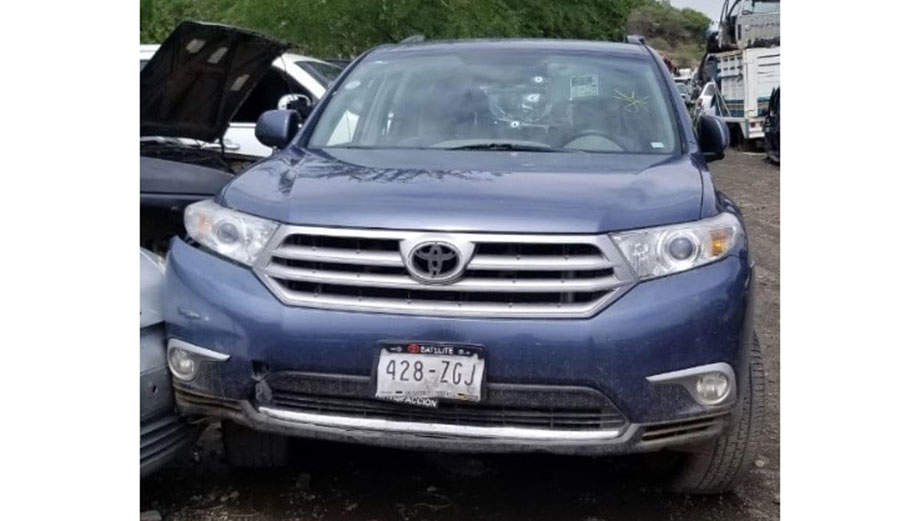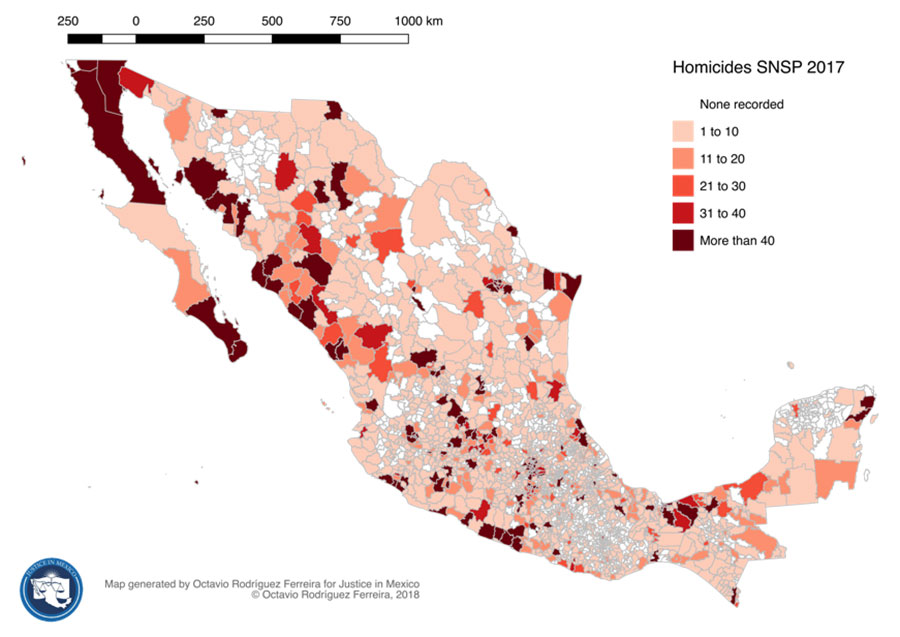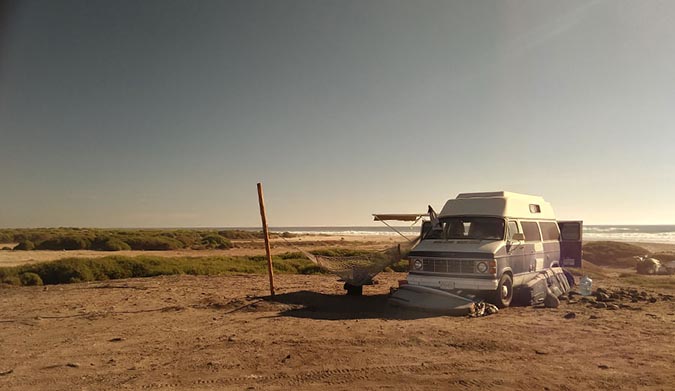Source – Inertia
Author – Alexander Haro
“I always figure the toll roads will be safe,” Jack Hebner, better known as, “The Surfing Swami,” told me. “If you’re going to be down some back road somewhere, then maybe something will happen—but the toll roads will be safe. Well, nope. Not in that area.” Hebner and his friends were in the beautiful, quiet town of Ixtapa, just five kilometers up the coast from Zihuatanejo. His crew had been surfing in Mexico for a few weeks. They were tanned and surf-exhausted. It was time to head home. But as it turned out, the toll road they were driving on wasn’t safe. Far from it. It was cartel territory, and their 2013 Toyota Highlander was full of surfing gear and camera equipment. “The locals call the area we were in ‘the throat of the wolf,’ he explained. “It’s just bad news. This older black pickup truck came up behind us, then just stayed there, like 20 yards behind us. Then it came up beside us and my brother, who was driving, saw (them) looking in the windows. They just shadowed us until they were ready, then came up real fast across the side and banged into the side of our car. At first, I thought we were in an accident. My brother hit the brakes, and right when we come to a stop, this black truck got in front of us. The door swings open and a guy jumps out with an AR-15. He doesn’t have his shirt on and he’s pointing the gun at us. I didn’t look at anything else. I was just transfixed on that gun. I started yelling at my brother to reverse, and as soon as he did, ‘bam, bam, bam!’ Three shots through the windshield and into the seats in between us.”

An insurance photo from the robbery. Image courtesy of Swami
Mexico is a wonderful place. With its endless, empty coastline tripping up wave after wave, it has long been a draw for the traveling surfer. Things are cheaper. The waves are better. The water is warmer. The beer is colder, and the days seem longer. In those vast expanses of emptiness, it can feel a little lawless, which, of course, is all part of the attraction. But beneath all of that runs a dark undercurrent. Mexico isn’t the safest place to travel on the planet, especially if you’re going by the statistics. But like everything else, the averages are just that – averages: thick gobs of paint piled up in small areas and spread out in a thin, even layer across a canvas that is the size of an entire country. The dangers of traveling depend on where you’re going and how you’re acting while you’re there. For me, Mexico is still a magical place. I still feel relatively safe traveling to my favorite spots south of the border, which can be a hard thing to reconcile if one bases opinions on news reports. But after Swami’s experience, I found myself asking how safe is traveling in Mexico, really. Swami and the three people he was traveling with decided it was better to keep their lives than their possessions. “The guy is screaming his head off in Spanish. I know a little Spanish, but at this point, I don’t know any at all,” Swami continued. “I’m just looking at this guy’s gun. We all bailed out of the car with our hands up and jumped over the guard railing. By the time I turned around, one guy had jumped in the car and another was on the running board with a pistol in his hand. Just lickety-split, man, they drove away with all our stuff.” Happy to be alive but angry at losing their things, they did the only thing they could: they started walking. “We walked for about 20 minutes down the road until we found one of those S.O.S phones,” Swami said. “When the police arrived, it was just two squad cars that pulled up. The guys get out, not wearing bulletproofs or anything. This is an armed robbery in the Narco zone, and they’re not concerned at all. That means they’re not afraid. They took some information and piled us all in this one squad car, then we spent the rest of the day filling out all these papers and giving descriptions. At some point, I realized that these guys aren’t going to do anything, because if they do, it’s just like you read about: they’ll just go kill their kids or something. It’s not that they’re directly connected, it’s just that they know who to mess with and who not to mess with.” Despite all that, Swami doesn’t feel much different about Mexico. He still loves it there. But, like anywhere else, bad things can happen. “You gotta be in the right place at the right time, because if you’re in the wrong place at the wrong time… well, shit happens,” he reflected. “Have you ever been to Detroit? How about Chicago?”

The Surf Swami holds no grudge towards the country where he was carjacked. Photo: Courtesy Surf Swami
And Swami is right. Despite the fact that the homicide rate in Mexico is higher than many other places, tourists aren’t generally the focus of organized crime rings—unless they’re playing tourist in a bad part of town. Mexican politicians and journalists, however, should be worried. According to a study by Justice in Mexico, a U.S.-based initiative out of the University of San Diego that “works to improve citizen security, strengthen the rule of law, and protect human rights in Mexico,” journalists were three times more likely to be killed than the general population, while mayors are at least twelve times more likely. In 2017 alone, nine sitting mayors were murdered. Over the last decade, Mexico’s crime and violence rates have skyrocketed, and media reports of Mexican homicides have skyrocketed along with them. Americans’ fear of traveling south of the border is at an all-time high, and the political climate we’re currently in reflects that. Although murders declined from 1994-2006, when President Felipe Calderon took office in 2007, things in Mexico got significantly worse. According to the Justice in Mexico Project, under Calderon’s reign, which lasted until 2012, “no other country in the Western Hemisphere had seen such a large increase either in its homicide rate or in the absolute number of homicides.” The numbers are indeed staggering—Mexico’s National Institute of Statistics, Geography, and Information reported 121,669 homicides, which works out to about two people every hour. Of course, that’s an average over the entire country, and like anywhere else, some places are far more dangerous than others. Below is a look at the numbers Justice in Mexico tallied.

2017 crime rates in Mexico. Courtesy of Justice in Mexico
Experts believe that the recent spate of violence in areas like Baja is largely caused by drug traffickers and organized crime. Studies show that a large proportion of all murders south of the border are likely related to the cartels. “Tallies produced over the past decade by government, media, academic, NGO, and consulting organizations suggest that roughly a third to half of all homicides in Mexico bear signs of organized crime-style violence,” write the authors of the Justice in Mexico study. So if you’re not buying drugs in bulk, you probably have a lot less to worry about. Millions of travelers visit Mexico each year without incident, but if one were to heed the warnings of the U.S. State Department, those numbers would fall dramatically. In January 2018, the State Department issued advisories for Sinaloa, Colima, Michoacan, Guerrero, and Tamaulipas, saying that those areas, according to the numbers, were as dangerous as taking a trip to Afghanistan, Syria, or Iraq. But for many who’ve traveled extensively throughout Mexico, the real-life experience might tell a different story. That’s because the average homicide rates aren’t necessarily indicative of how dangerous a country is to a safety-conscious traveler.
The door swings open and a guy jumps out with an AR-15. He doesn’t have his shirt on and he’s pointing the gun at us. I didn’t look at anything else. I was just transfixed on that gun.
“While most of these homicides appeared to be targeted, criminal organization assassinations,” the State Department said in its travel advisory, “turf battles between criminal groups have resulted in violent crime in areas frequented by U.S. citizens. Shooting incidents injuring or killing bystanders have occurred.” Just like the Surfing Swami, no matter how safe you think you’re being, there’s always a chance you’ll simply be in the wrong place at the wrong time. So while warring cartel members battle for turf and supremacy, a government that relies heavily on tourism is desperately trying to smooth things over. After the State Department issued a travel advisory for Baja California Sur and Quintana Roo in 2017, Mexico’s Tourism Board tried to put out the fire. “If you compare the rate in terms of homicides per 100,000 inhabitants in any city in the world, those particular destinations are very low,” said Alfonso Sumano, a director for Mexico’s Tourism Board. “I’m not saying that there are no problems … but the Mexico authorities are aware of certain incidents or certain problems that they have been facing in areas close to the destinations but not affecting any tourists or people enjoying the destinations. I truly believe that the travel advice, that the travel recommendation, is very clear and they are not recommending to go. They are just recommending to use your common sense.” Judging from one experience I had, the cops are walking the finest of lines between bowing to the cartels and trying to keep tourists safe.

Scenes like this are worth all the danger in the world. Photo: Alex Haro
A few years ago, I spent several weeks on various beaches in my van in Baja Sur, a place that I think of as generally safe. At one beach, in particular, an interesting group of people became good friends, sharing fresh fish and cheap mezcal in front of the fire each night. There was, however, a strange couple that showed up. They were living in a car up the arroyo, a place where campers head each morning to dig holes to shit in. They said they were on their honeymoon, but they never held hands or kissed; never laughed with each other away from the group. The man had constantly slicked hair and his clothes were far too nice for someone who spent time on a beach like the one we were on. The plates on their car were from Wisconsin, but they were definitely not from Wisconsin. Within a few days, people started noticing that their things were going missing—passports, cash, cameras—things just vanished from tents and cars. After a week, someone called the police, who rolled down the dusty arroyo road to the beach, flak jackets on and guns cocked. In minutes, they had the couples’ car emptied. Cameras, passports, and most of the missing cash were returned. The officers took the couple farther up the arroyo and we never saw them again. Rumor had it they’d threatened them with guns to the head, telling them that if they ever came back to the beach, they’d be shot on sight. And while I didn’t see any of it in person, I don’t have a hard time believing it—in that small town, tourists are second only to the basil fields, and the basil fields don’t make all that much money. So just how dangerous is Mexico for the traveling surfer? Well, that all depends on what kind of surfer you are and where you’re going. Are you posted up on beaches breaking into cars and stealing cash and passports? Do you flash wads of money around in Tijuana strip clubs? Do you get blackout drunk and score drugs on dark, deserted streets? Or do you look for the quiet places in between, the places where the waves are empty and the towns are small? As the Surfing Swami’s tale tells us, you’re never entirely safe, no matter where you are—but that’s the case anywhere on Earth. There’s a chance you’ll be mugged on the street corner outside your house. And while there are certain places in Mexico where the likelihood of something awful happening are far higher, there are certain places where you will find that empty perfection you’ve been looking for—you may have to pay off a police officer here and there along the way, but that might be part of the attraction. What’s important to realize, however, is just how easy it is to accidentally find yourself in a serious situation and be prepared to deal with it, even if it means letting go of your possessions. “Material things come and they go,” Swami said. “But in life? That’s a one time shot. I believe in reincarnation, but hey, I don’t want to push it. When you drive in the Himalayas, there are signs that say ‘Drive Safely. Better late in this life than early for the next.’” So if it’s an adventure you’re looking for, be aware that adventure inherently comes with risk. Parts of Mexico might be risky. But if you’re willing to chance it, the juice is worth the squeeze.